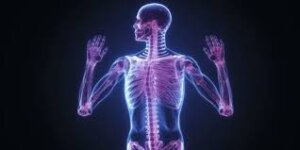DJD ICD 10: A Complete Guide to Degenerative Joint Disease Coding

DJD ICD 10, also known as osteoarthritis, is the most common form of arthritis worldwide. It is a progressive condition that affects millions of people, especially older adults, and leads to pain, stiffness, and decreased mobility. For medical professionals, proper diagnosis and documentation of DJD is essential—not just for treatment planning, but also for accurate insurance claims, research, and healthcare reporting.

That’s where ICD-10 coding comes in. The International Classification of Diseases, 10th Revision (ICD-10), provides standardized codes for identifying diseases and medical conditions. This blog explores what DJD is, its symptoms, management, and, most importantly, how it is classified using ICD-10 codes.
What Is Degenerative Joint Disease (DJD)?
DJD is a chronic, progressive condition where the protective cartilage that cushions joints gradually wears down. This results in bones rubbing against each other, causing pain, swelling, and stiffness. Unlike autoimmune arthritis (such as rheumatoid arthritis), DJD is primarily caused by wear and tear over time.
Commonly affected joints include:
-
Knees
-
Hips
-
Spine
-
Hands
It is often referred to as “wear-and-tear arthritis,” but the reality is more complex, involving genetic, mechanical, and metabolic factors.
Symptoms of DJD
The severity of DJD symptoms can vary from mild discomfort to debilitating pain. Key symptoms include:
-
Joint pain that worsens with activity and improves with rest
-
Stiffness, especially in the morning or after long periods of inactivity
-
Swelling around affected joints
-
Loss of flexibility or reduced range of motion
-
Crepitus (a grating or crackling sound when moving the joint)
-
Bone spurs (extra bone growths around joints)
Over time, these symptoms can significantly affect a person’s quality of life.
Causes and Risk Factors
DJD is influenced by several risk factors, including:
-
Age – Risk increases with age.
-
Gender – Women are more likely to develop DJD, especially after menopause.
-
Obesity – Extra weight puts added stress on weight-bearing joints.
-
Joint injuries – Sports or work-related injuries can accelerate cartilage breakdown.
-
Genetics – Family history plays a role in susceptibility.
-
Repetitive stress – Jobs or activities requiring repetitive movement increase risk.
Diagnosing DJD
Diagnosis usually involves:
Medical history and physical examination – Doctors assess symptoms, movement, and joint tenderness.
Imaging tests – X-rays show cartilage loss, bone spurs, and joint narrowing; MRI can reveal early changes.
Lab tests – To rule out other forms of arthritis such as rheumatoid arthritis or gout.
Accurate diagnosis is essential, not only for treatment but also for assigning the correct ICD-10 code.
ICD-10 Coding for DJD
In ICD-10, Degenerative Joint Disease is primarily coded under osteoarthritis (OA). The coding depends on the location of the joint and whether the condition is generalized or localized.
Here are some common DJD ICD-10 codes:
M15.0 – Primary generalized (osteo)arthritis
M15.9 – Polyosteoarthritis, unspecified
M16.0 – Primary osteoarthritis of hip, bilateral
M16.9 – Osteoarthritis of hip, unspecified
M17.0 – Primary osteoarthritis of knee, bilateral
M17.9 – Osteoarthritis of knee, unspecified
M19.90 – Unspecified osteoarthritis, unspecified site
M47.812 – Spondylosis without myelopathy or radiculopathy, cervical region (for DJD of the spine)
For example:
-
A patient with DJD in both knees → M17.0
-
A patient with hip arthritis, unspecified side → M16.9
-
Generalized DJD affecting multiple sites → M15.0
Accurate coding is crucial for proper billing, insurance reimbursement, and epidemiological data collection.
Treatment Options for DJD
While there is no cure for DJD, treatments aim to relieve symptoms, improve mobility, and slow disease progression.
Lifestyle Modifications
-
Weight loss to reduce joint stress
-
Low-impact exercises like swimming or cycling
-
Use of supportive devices (braces, canes)
Medications
-
Pain relievers: Acetaminophen, NSAIDs
-
Topical agents: Creams or gels with NSAIDs or capsaicin
-
Corticosteroid injections for inflammation relief
-
Viscosupplementation with hyaluronic acid in knees
Physical Therapy
Exercises to strengthen muscles, improve flexibility, and maintain mobility.
Surgical Interventions
-
Joint replacement (hip, knee) for severe cases
-
Arthroscopy or osteotomy for select patients
Living With DJD
Managing DJD requires a multidisciplinary approach involving doctors, physical therapists, and lifestyle changes. Patients are encouraged to:
-
Stay active but avoid high-impact activities.
-
Maintain a healthy weight.
-
Follow prescribed treatment plans.
-
Seek emotional support, as chronic pain can affect mental health.
Importance of ICD-10 Documentation
For healthcare providers, correct DJD ICD-10 coding is more than paperwork—it ensures:
-
Accurate billing and reimbursement from insurance providers.
-
Consistency in patient records, which aids in long-term care.
-
Better healthcare data for research and policy-making.
-
Legal compliance with medical documentation standards.
Misclassification or vague coding (such as using “unspecified” codes) may lead to claim denials or incomplete patient records.
Final Thoughts
DJD ICD 10 is a common yet challenging condition that significantly impacts quality of life. While it cannot be cured, early diagnosis, proper treatment, and lifestyle adjustments can make it manageable.
From a healthcare perspective, accurate ICD-10 coding is vital for patient care, insurance, and research. Codes such as M17.0 for primary osteoarthritis of both knees or M19.90 for unspecified osteoarthritis provide clarity and standardization across the medical field.
Understanding DJD and its ICD-10 codes bridges the gap between clinical care and healthcare management—ultimately improving outcomes for patients and providers alike.



